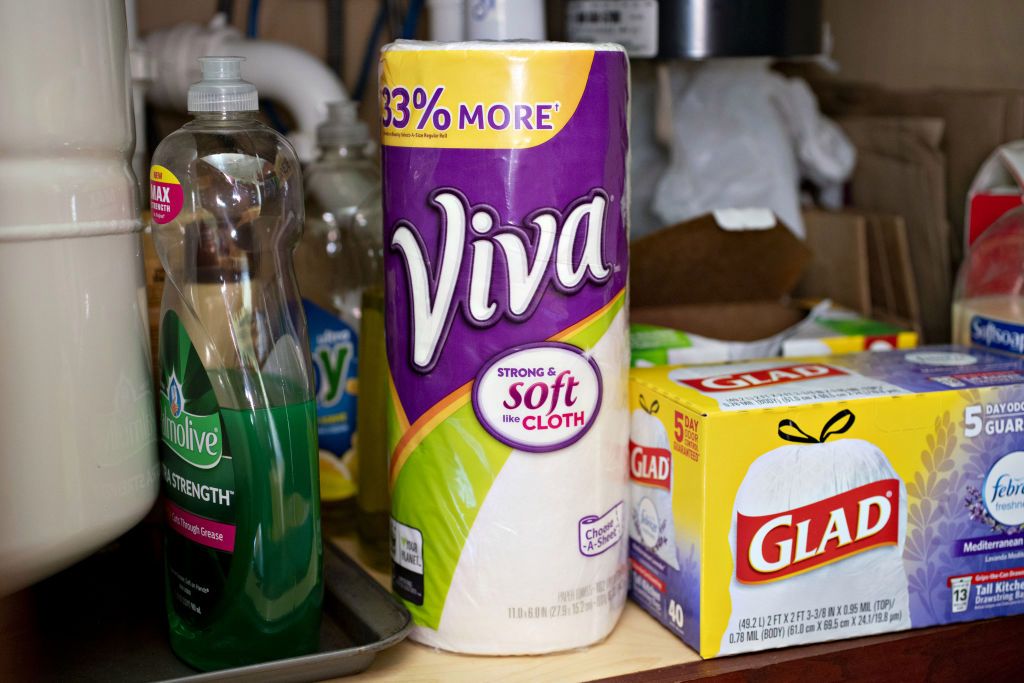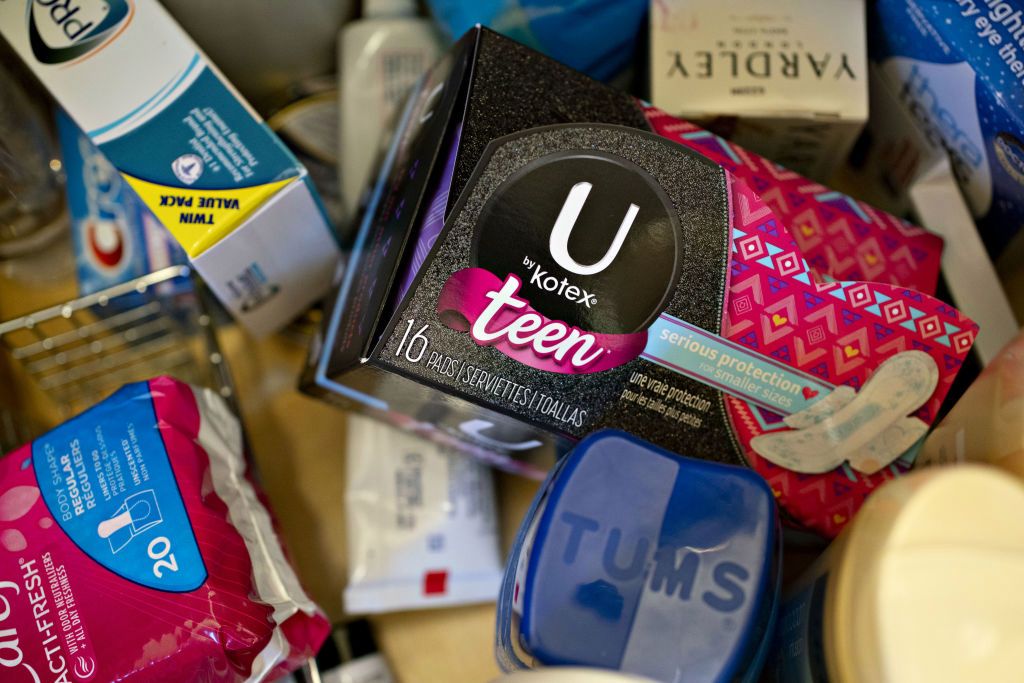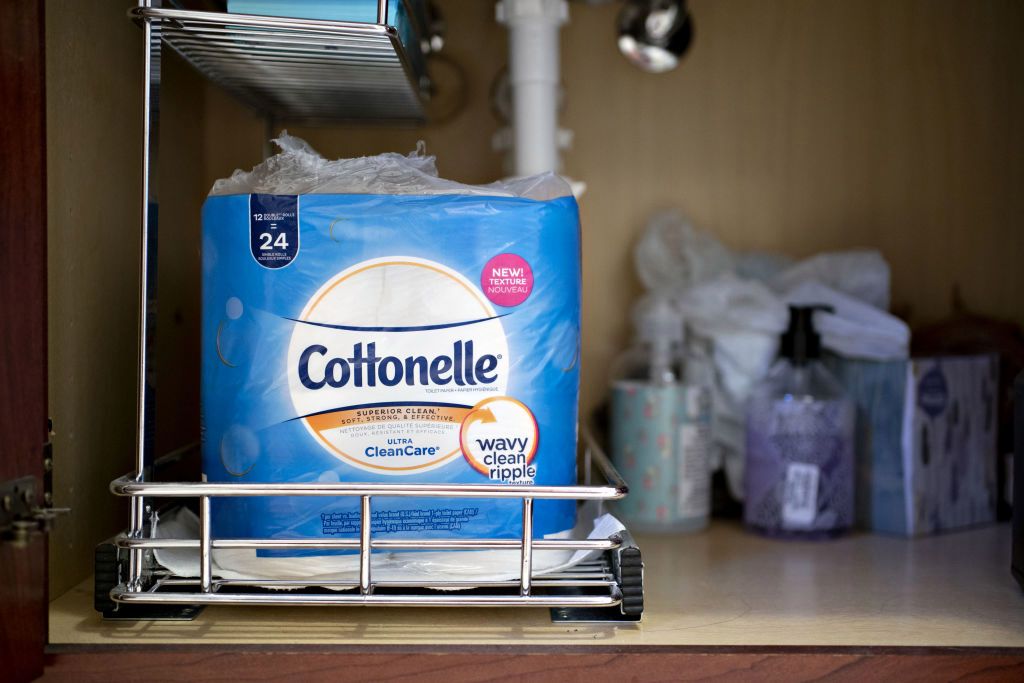
新冠疫情已经证明,个人护理用品在日常生活中不可或缺。商店会努力保证货架上有货,而疯狂的购物者会毫不犹豫地抢购他们能够买到的任何东西。这可能迫使人们选择舒适度更差的单层厕纸、再生面巾纸,甚至是便携式清洗器。
这些东西并不新奇,实际上,大多数国家的人没有超软厕纸用,也都过得好好的。然而在美国,尽管豪华的柔软纸巾增加了环境的负担,但它已经变得司空见惯。
因为纸浆和纸质产品(纸巾、宣传册、包装等)造成的不可持续林业种植情况,全球生态最重要的区域和物种正面临威胁,包括生活在此的7亿5000万人(其中6000万人是原住民)。然而,近几年,消费者和利益相关方的期望,以及对商业风险与糟糕的可持续举措的认识,正在指导各家企业转型升级,想办法保护全世界森林中的生物多样性,以及在其中生活和工作的工人和社区的健康和权利。

金佰利公司(Kimberly-Clark)就是这样一家企业,它的品牌Cottonelle、好奇(Huggies)、舒洁(Kleenex)、Poise、和高洁丝(Kotex)的U系列在175个国家销售,在今年的《财富》美国500强中排名第158位。金佰利为保护森林重要生态系统所做的努力,是整个行业需要迈出的一大步。
所有生意都和森林有关
根据非盈利保护组织世界自然基金会(World Wildlife Fund)的数据,森林砍伐和退化正以每年1800万英亩(约72843平方千米),或每分钟27个足球场的速度破坏着森林。在这个重要的问题上,一份由As You Sow和Friends of the Earth撰写的报告显示,至少有380家上市公司的投资方,在生产、加工和交易棕榈油、纸张和纸浆、橡胶、木材、肉牛或大豆的过程中对森林造成了威胁。
世界自然基金会负责森林业务的高级主管琳达•沃克表示:“可以说,所有生意都和森林有关,因为即便你不是一家林产品企业,每个人也都在以某种方式使用林产品。”从办公家具、复印纸到公共厕所厕纸,再到包装,我们会以各种方式依赖森林相关商品。“如果林产品来自于负责任管理的森林,那么这可能是一个很好的解决方案。森林能够再生,可以支持野生动植物在其中生存。但如果它们得不到负责任的管理,或者森林(为了饲养肉牛或发展)被砍伐殆尽,那么这些价值就会受到影响或破坏。”

据世界自然基金会称,美国是木材进口和消费大国,而这些木材来源于非法采伐和森林管理不善的高风险国家。金佰利是全球最大的个人护理产品制造商之一,在80多个国家中,其产品份额均排名第一或第二。全球四分之一的人口每天都在用该企业的产品。
为了确保其材料以负责任的方式采购,金佰利和国际非盈利型组织森林管理委员会(Forest Stewardship Council,简称FSC)合作超过十年。FSC制定了严格的环境、经济、社会标准,督促森林的可持续管理。原材料的可持续采购对保护森林至关重要。FSC认证是一个自愿参照的市场标准,所以买家的需求和供应商的理念和经济利益,是让更多的森林管理者遵循FSC不可或缺的部分。
沃克说:“我们真心提倡像金佰利和其它公共纸张和木制品行业企业,在它们的采购政策上优先考虑将它们采购的原生纤维进行FSC认证。这样可以帮助消费者了解,带有FSC标志的产品,其采购方式保护了森林价值。”到2025年,金佰利的目标是90%的纸巾纤维来自于环保材料,包括再生纤维、可持续的非木纤维和FSC产销链认证的原木纤维。
用于超软纸的软木纤维
纸尿裤和女性护理用品使用一种名为“绒毛浆”的木浆纤维,用于提高吸水性。另一方面,为了配制纸巾产品,制造商们采用混合不同纤维的配方。例如,厕纸混合了北方森林(通常来自加拿大)的北方漂白软木牛皮纸和南美常见的桉树。针叶树柔软的纤维赋予了纸巾柔软温和,使其更加亲肤。根据产品等级,可能会添加回收材料。在纸巾产品中添加的回收材料越多,产品就越粗糙。
加拿大的北方森林由用于纸巾的软木树木组成,是世界现存最大的完整森林,储碳量是世界可采石油储量的两倍。非营利性组织自然资源保护协会(Natural Resources Defense Council)的北方企业活动经理谢莉•温亚德说道:“北方森林提供给社区和地球的价值难以估量。”加拿大北方森林的砍伐极其严重,对600多个原住民社区、生物多样性、碳储存,以及依赖这片完整森林生存的物种(比如北美驯鹿)都构成了威胁。每年有超过100万英亩(4047平方千米)的北方森林被砍伐殆尽。“北方森林面临的这些问题与我们每天在家使用的产品有着直接联系。”

负责金佰利安全、可持续、和职业健康的副总裁丽莎•摩登说:“所以我们工作的重点就是保护和改善这些森林,因为它们在气候方面起着重要作用。”因为森林的砍伐和再生,卫生纸品的采伐类型被认为是一种森林退化风险。砍伐一旦开始,重型机械会伐尽树木并释放存于土壤中的碳,从而改变森林的特性。
摩登继续说道:“保护生物多样性是一个大问题,所以尽管我们购买的商品并不一定会砍伐森林,但我们希望确保森林能够得到保护和改善,这样我们就不会看到这些森林地貌的退化。”
金佰利的纸巾产品中含有84%的环保纤维。大多数再生纤维都用于金佰利专业品牌产品,这些产品可以在学校、机场、酒店等地找到。然而,超市货架上的超柔软产品,包括宝洁(Procter & Gamble)的Charmin “Ultra Soft”系列,都使用极少量、或几乎不使用回收材料。规模较小的企业,例如Who Gives a Crap和Seventh Generation,会100%使用回收材料,因为对小企业来说,达成这一目标会容易一些。

FSC的首席执行官克里斯•麦克拉伦说:“金佰利和其它公司强烈希望它们的产品能够最大限度减少对原生纤维的依赖,但阻碍很大,原生纤维有其不可忽视的特性,如果不具备必要的基础设施,就认为可以使用回收材料,那就太过简单了。”因为厕纸结构的性质和大量的投入,仅仅使用回收材料或FSC认证的产品,很难满足全球需求。即使回收材料能够达到同等性能,这么大量的回收资源也无法一直得到保证,确保在某些地方、达到某个等级的回收材料供应也并非易事。
麦克拉伦说:“我认为,对整个社会而言,关键是我们要弄清楚,是否需要在这些产品中添加原生纤维,将它们变成我们想要的那样。如果整个社会想清楚了这个问题,其实就是很好地激励了森林业主去正确地管理森林、将其作为森林保留下来,而不是把森林变成用来盖房子、搞农业,或用来做其它短期经济回报更高的事情。”
过于豪华,无法冲走
2021年6月,世界自然基金会宣布了Forests Forward计划,帮助公司和其他利益相关者更好地了解如何减轻采购、气候和社会风险,并建立有弹性的供应链。金佰利公司是目前第一批加入的美国公司之一。其他公司包括惠普(HP)、国际纸业(International Paper)、威廉姆斯-索诺玛(Williams-Sonoma),以及劳氏公司(Lowe’s)。
摩登说:“它是我们很棒的合作伙伴,因为它们在这些项目的未来方面帮助我们发挥思想领导作用,比如我们如何开始思考森林碳,以及我们如何思考生物多样性保护。这种伙伴关系确实有助于我们思考未来需要采取哪些举措来保护这些价值观。”
随着《财富》美国500强企业更倾向于采取环保和气候行动,它们也在平衡价值驱动因素。对金佰利而言,价值驱动因素就包括了可负担的价格、品牌品质,以及消费者的需求和期望。金佰利希望到2025年把天然(北方)森林纤维足迹减少一半,并采取其他可持续措施。参与像Forests Forward一样的项目,并且在可替代非木纤维中创新(例如澳大利亚经FSC认证的100%竹制产品新型舒洁ECO厕纸),在此过程中,金佰利将不断评估纸张和纸浆问题。
然而,在我们几秒种就用掉柔软厕纸的背后,百年大树依然在消失。
麦克拉伦说:“转向100%负责任的采购,需要这个系统中规模最大的企业来带头,因为它们所做的承诺和它们的做法对整个体系的影响最大。但总体来说,要想实现稳定的负责任(森林管理),我们必须付出比现在更多的努力。”(财富中文网)
译者:张晓晨
新冠疫情已经证明,个人护理用品在日常生活中不可或缺。商店会努力保证货架上有货,而疯狂的购物者会毫不犹豫地抢购他们能够买到的任何东西。这可能迫使人们选择舒适度更差的单层厕纸、再生面巾纸,甚至是便携式清洗器。
这些东西并不新奇,实际上,大多数国家的人没有超软厕纸用,也都过得好好的。然而在美国,尽管豪华的柔软纸巾增加了环境的负担,但它已经变得司空见惯。
因为纸浆和纸质产品(纸巾、宣传册、包装等)造成的不可持续林业种植情况,全球生态最重要的区域和物种正面临威胁,包括生活在此的7亿5000万人(其中6000万人是原住民)。然而,近几年,消费者和利益相关方的期望,以及对商业风险与糟糕的可持续举措的认识,正在指导各家企业转型升级,想办法保护全世界森林中的生物多样性,以及在其中生活和工作的工人和社区的健康和权利。
金佰利公司(Kimberly-Clark)就是这样一家企业,它的品牌Cottonelle、好奇(Huggies)、舒洁(Kleenex)、Poise、和高洁丝(Kotex)的U系列在175个国家销售,在今年的《财富》美国500强中排名第158位。金佰利为保护森林重要生态系统所做的努力,是整个行业需要迈出的一大步。
所有生意都和森林有关
根据非盈利保护组织世界自然基金会(World Wildlife Fund)的数据,森林砍伐和退化正以每年1800万英亩(约72843平方千米),或每分钟27个足球场的速度破坏着森林。在这个重要的问题上,一份由As You Sow和Friends of the Earth撰写的报告显示,至少有380家上市公司的投资方,在生产、加工和交易棕榈油、纸张和纸浆、橡胶、木材、肉牛或大豆的过程中对森林造成了威胁。
世界自然基金会负责森林业务的高级主管琳达•沃克表示:“可以说,所有生意都和森林有关,因为即便你不是一家林产品企业,每个人也都在以某种方式使用林产品。”从办公家具、复印纸到公共厕所厕纸,再到包装,我们会以各种方式依赖森林相关商品。“如果林产品来自于负责任管理的森林,那么这可能是一个很好的解决方案。森林能够再生,可以支持野生动植物在其中生存。但如果它们得不到负责任的管理,或者森林(为了饲养肉牛或发展)被砍伐殆尽,那么这些价值就会受到影响或破坏。”
据世界自然基金会称,美国是木材进口和消费大国,而这些木材来源于非法采伐和森林管理不善的高风险国家。金佰利是全球最大的个人护理产品制造商之一,在80多个国家中,其产品份额均排名第一或第二。全球四分之一的人口每天都在用该企业的产品。
为了确保其材料以负责任的方式采购,金佰利和国际非盈利型组织森林管理委员会(Forest Stewardship Council,简称FSC)合作超过十年。FSC制定了严格的环境、经济、社会标准,督促森林的可持续管理。原材料的可持续采购对保护森林至关重要。FSC认证是一个自愿参照的市场标准,所以买家的需求和供应商的理念和经济利益,是让更多的森林管理者遵循FSC不可或缺的部分。
沃克说:“我们真心提倡像金佰利和其它公共纸张和木制品行业企业,在它们的采购政策上优先考虑将它们采购的原生纤维进行FSC认证。这样可以帮助消费者了解,带有FSC标志的产品,其采购方式保护了森林价值。”到2025年,金佰利的目标是90%的纸巾纤维来自于环保材料,包括再生纤维、可持续的非木纤维和FSC产销链认证的原木纤维。
用于超软纸的软木纤维
纸尿裤和女性护理用品使用一种名为“绒毛浆”的木浆纤维,用于提高吸水性。另一方面,为了配制纸巾产品,制造商们采用混合不同纤维的配方。例如,厕纸混合了北方森林(通常来自加拿大)的北方漂白软木牛皮纸和南美常见的桉树。针叶树柔软的纤维赋予了纸巾柔软温和,使其更加亲肤。根据产品等级,可能会添加回收材料。在纸巾产品中添加的回收材料越多,产品就越粗糙。
加拿大的北方森林由用于纸巾的软木树木组成,是世界现存最大的完整森林,储碳量是世界可采石油储量的两倍。非营利性组织自然资源保护协会(Natural Resources Defense Council)的北方企业活动经理谢莉•温亚德说道:“北方森林提供给社区和地球的价值难以估量。”加拿大北方森林的砍伐极其严重,对600多个原住民社区、生物多样性、碳储存,以及依赖这片完整森林生存的物种(比如北美驯鹿)都构成了威胁。每年有超过100万英亩(4047平方千米)的北方森林被砍伐殆尽。“北方森林面临的这些问题与我们每天在家使用的产品有着直接联系。”
负责金佰利安全、可持续、和职业健康的副总裁丽莎•摩登说:“所以我们工作的重点就是保护和改善这些森林,因为它们在气候方面起着重要作用。”因为森林的砍伐和再生,卫生纸品的采伐类型被认为是一种森林退化风险。砍伐一旦开始,重型机械会伐尽树木并释放存于土壤中的碳,从而改变森林的特性。
摩登继续说道:“保护生物多样性是一个大问题,所以尽管我们购买的商品并不一定会砍伐森林,但我们希望确保森林能够得到保护和改善,这样我们就不会看到这些森林地貌的退化。”
金佰利的纸巾产品中含有84%的环保纤维。大多数再生纤维都用于金佰利专业品牌产品,这些产品可以在学校、机场、酒店等地找到。然而,超市货架上的超柔软产品,包括宝洁(Procter & Gamble)的Charmin “Ultra Soft”系列,都使用极少量、或几乎不使用回收材料。规模较小的企业,例如Who Gives a Crap和Seventh Generation,会100%使用回收材料,因为对小企业来说,达成这一目标会容易一些。
FSC的首席执行官克里斯•麦克拉伦说:“金佰利和其它公司强烈希望它们的产品能够最大限度减少对原生纤维的依赖,但阻碍很大,原生纤维有其不可忽视的特性,如果不具备必要的基础设施,就认为可以使用回收材料,那就太过简单了。”因为厕纸结构的性质和大量的投入,仅仅使用回收材料或FSC认证的产品,很难满足全球需求。即使回收材料能够达到同等性能,这么大量的回收资源也无法一直得到保证,确保在某些地方、达到某个等级的回收材料供应也并非易事。
麦克拉伦说:“我认为,对整个社会而言,关键是我们要弄清楚,是否需要在这些产品中添加原生纤维,将它们变成我们想要的那样。如果整个社会想清楚了这个问题,其实就是很好地激励了森林业主去正确地管理森林、将其作为森林保留下来,而不是把森林变成用来盖房子、搞农业,或用来做其它短期经济回报更高的事情。”
过于豪华,无法冲走
2021年6月,世界自然基金会宣布了Forests Forward计划,帮助公司和其他利益相关者更好地了解如何减轻采购、气候和社会风险,并建立有弹性的供应链。金佰利公司是目前第一批加入的美国公司之一。其他公司包括惠普(HP)、国际纸业(International Paper)、威廉姆斯-索诺玛(Williams-Sonoma),以及劳氏公司(Lowe’s)。
摩登说:“它是我们很棒的合作伙伴,因为它们在这些项目的未来方面帮助我们发挥思想领导作用,比如我们如何开始思考森林碳,以及我们如何思考生物多样性保护。这种伙伴关系确实有助于我们思考未来需要采取哪些举措来保护这些价值观。”
随着《财富》美国500强企业更倾向于采取环保和气候行动,它们也在平衡价值驱动因素。对金佰利而言,价值驱动因素就包括了可负担的价格、品牌品质,以及消费者的需求和期望。金佰利希望到2025年把天然(北方)森林纤维足迹减少一半,并采取其他可持续措施。参与像Forests Forward一样的项目,并且在可替代非木纤维中创新(例如澳大利亚经FSC认证的100%竹制产品新型舒洁ECO厕纸),在此过程中,金佰利将不断评估纸张和纸浆问题。
然而,在我们几秒种就用掉柔软厕纸的背后,百年大树依然在消失。
麦克拉伦说:“转向100%负责任的采购,需要这个系统中规模最大的企业来带头,因为它们所做的承诺和它们的做法对整个体系的影响最大。但总体来说,要想实现稳定的负责任(森林管理),我们必须付出比现在更多的努力。”(财富中文网)
译者:张晓晨
As the pandemic proved, personal care items are indispensable to everyday life. Stores struggled to keep shelves stocked as frantic shoppers grabbed whatever they could without a second thought. This may have forced people to explore outside their comfort level to use one-ply toilet paper, facial tissue made of recycled fibers, or even portable bidets.
But these things aren't novel; in fact, most countries get by without the prestige of an ultrasoft wipe. In America, however, the luxury of plush tissue has become commonplace, despite its strain on the environment.
The world's most ecologically important places and species, along with the 750 million people who live there, 60 million of whom are indigenous, are threatened because of unsustainable forestry related to pulp and paper products (tissue, catalog paper, packaging, etc.). In recent years, though, consumer and stakeholder expectations (and recognizing the business risk associated with poor sustainable initiatives) are guiding companies to evolve and seek solutions to protect the health, biodiversity, and rights of workers and communities of the world's forests.
With its brands sold in more than 175 countries, Kimberly-Clark—maker of Cottonelle, Huggies, Kleenex, Poise, and U by Kotex, and No. 158 on the Fortune 500 this year—is one such company. Kimberly-Clark’s efforts to safeguard forests’ vital ecosystems are one step in a giant leap the entire industry needs to take.
Every business is in the forest business
According to the conservation nonprofit World Wildlife Fund (WWF), deforestation and degradation are destroying forests at the rate of about 18 million acres per year, or 27 soccer fields per minute. Looking at the overarching issue, a report created by As You Sow and Friends of the Earth shows that investors in at least 380 publicly listed companies are linked to forest risks in producing, processing, and trading palm oil, paper and pulp, rubber, timber, cattle, or soybeans.
"We like to say every business is in the forest business, because even if you're not a forest products company, everyone uses forest products in some way," says Linda Walker, senior director of corporate engagement for forests at WWF. From office furniture and copy paper to communal bathroom tissue to packaging, we now innately rely on forests as a commodity. "Forest products can be a great solution if they come from forests that have been responsibly managed. A forest can be renewable and sustain wildlife. But if they're not managed responsibly or if they're clear-cut [for cattle or development], those values can be impacted or destroyed."
The United States is a leading importer and consumer of wood from countries considered high risk for illegal logging and poor forest management, according to WWF. Kimberly-Clark is one of the world’s largest producers of personal care products and holds the No. 1 and 2 brand shares in 80 countries. A quarter of the world’s population uses one of the conglomerate's products each day.
To ensure its materials are responsibly sourced, Kimberly-Clark has partnered for more than a decade with the Forest Stewardship Council (FSC), a international nonprofit that sets rigorous environmental, economic, and social standards to promote sustainable forest management. Sustainable procurement of raw materials is vital to forest conservation. The FSC certification is a voluntary market standard, so demand on the part of buyers, as well as philosophical and economic benefits on the suppliers’ part, is integral in getting more forest managers to comply with FSC.
"We really advocate for companies like Kimberly-Clark and others in the public paper and wood products sectors to preference in their sourcing policies for an FSC certification for the virgin fiber that they source. Doing so can help consumers know that the products with [an FSC] logo have been sourced in a way that protects those values," says Walker. Kimberly-Clark aims to acquire 90% of its tissue fiber from environmentally preferred sources by 2025, including recycled fiber, sustainable alternative non-wood fibers, and FSC chain-of-custody certified virgin wood fibers.
Softwood fibers for ultrasoft paper
Diapers and feminine care use wood pulp fibers known as "fluff pulp" to obtain high absorbency. On the other hand, to concoct a tissue product, manufacturers use a sort of recipe of blended various fibers. For example, toilet paper is a mixture of northern bleached softwood kraft from boreal forests (often from Canada) and eucalyptus typically from South America. The softer fibers of coniferous trees lend to the supple, gentle tissue papers gentle on the skin. Depending on the grade of the product, recycled materials may be incorporated. The more recycled content used in a tissue paper product, the rougher it is.
Canada's boreal forest, which comprises softwood used for tissue, is the largest remaining intact forest on the planet and stores the carbon equivalent of twice the world's recoverable oil reserves. "It's really hard to overstate the values that the boreal forest provides to communities and to the planet," says Shelley Vinyard, the boreal corporate campaign manager at Natural Resources Defense Council, a nonprofit environmental advocacy group. Logging in Canada's boreal forest is extensive, creating a threat to 600 indigenous communities, biodiversity, stored carbon, and to the species that rely on a swath of intact forest land to survive, such as the threatened woodland caribou. More than a million acres of the boreal are clear-cut every year. "Some of the problems facing the boreal are tied directly to products that we use every day in our homes."
"That's where a lot of our effort is very much focused—helping to protect and enhance those forests in the world because they play such a critical role in climate," says Lisa Morden, vice president of safety, sustainability, and occupational health at Kimberly-Clark. The type of logging in hygiene paper products is considered a degradation risk where forests are cut down and regrown. At the outset of logging, heavy machinery clear-cuts the trees and releases carbon stored in the soil, altering the nature of the forest.
"Biodiversity protection is a huge issue," Morden continues. "So while the commodities that we purchase aren't necessarily deforestation, we want to be sure that forest quality is protected and enhanced, so we don't see degradation of those forest landscapes."
Kimberly-Clark’s tissue products contain 84% environmentally preferred fiber. Most of its recycled fibers are used in its Kimberly-Clark Professional brand found in schools, airports, hotels, and so forth. However, corporations’ supersoft products seen on grocery shelves, including Procter & Gamble's Charmin “Ultra Soft” lines, use little to no recycled materials. Smaller businesses like Who Gives a Crap and Seventh Generation contain 100% recyclables, an easier undertaking at a lesser scale.
"There is a strong desire on the part of Kimberly-Clark and others to minimize their dependence on virgin fiber in these products. But there are significant challenges in doing that," says Chris McLaren, CEO of the FSC. "Virgin fibers have specific characteristics that can't be ignored, and it's overly simplistic to assume you can move to recyclable material when the infrastructure isn't necessarily there." Because of the very nature of toilet paper's composition and its numerous inputs, it is tricky to use only recycled or FSC-certified products and still meet global demand. Even if recycled materials could achieve the same performance, those resources aren't always accessible at scale or available in the right places or grades.
"I think the key for us as a society is to figure out if we need virgin fiber in these products in order to make them work the way we want them to work," says McLaren. "If you do it that way, you're actually giving the forest owner a really good incentive to manage that forest correctly and keep it as a forest instead of converting it into real estate or agriculture or some other land use with a higher short-term economic value."
Too plush to flush
In June 2021, WWF announced its Forests Forward program to help companies and other stakeholders better understand how to mitigate sourcing, climate, and social risks, and build resilient supply chains. Kimberly-Clark is one of the first U.S. companies currently on board. Others include HP, International Paper, Williams-Sonoma, and Lowe’s.
"It's such a great partner for us because they help with thought leadership in terms of the future of these programs; how do we begin to think about forest carbon, and how do we think about biodiversity protection," says Morden. "That partnership really helps us to think through what those initiatives in the future need to be to protect those values."
As Fortune 500 companies lean into environmental and climate action, they’re also balancing value drivers. For Kimberly-Clark, that’s affordable prices, quality associated with the brands, and what consumers need, want, and expect. By 2025, the company hopes to reduce its natural (northern) forest fiber footprint by 50%, among other sustainable initiatives. Participating in programs like Forests Forward and innovating within alternative non-wood fibers—like FSC-certified 100% bamboo for the new Kleenex ECO toilet paper available in Australia—Kimberly-Clark is continuously assessing issues in paper and pulp.
Still, trees hundreds of years old are being lost for soft toilet paper we use in just seconds.
"The largest companies in the system are the most visible in the types of commitments that they're making and the type of work that they're undertaking in order to pivot to responsible sourcing 100%," says McLaren. "But if you look at the overall picture, we certainly need to be doing more than we are now in order to achieve something like stability."






